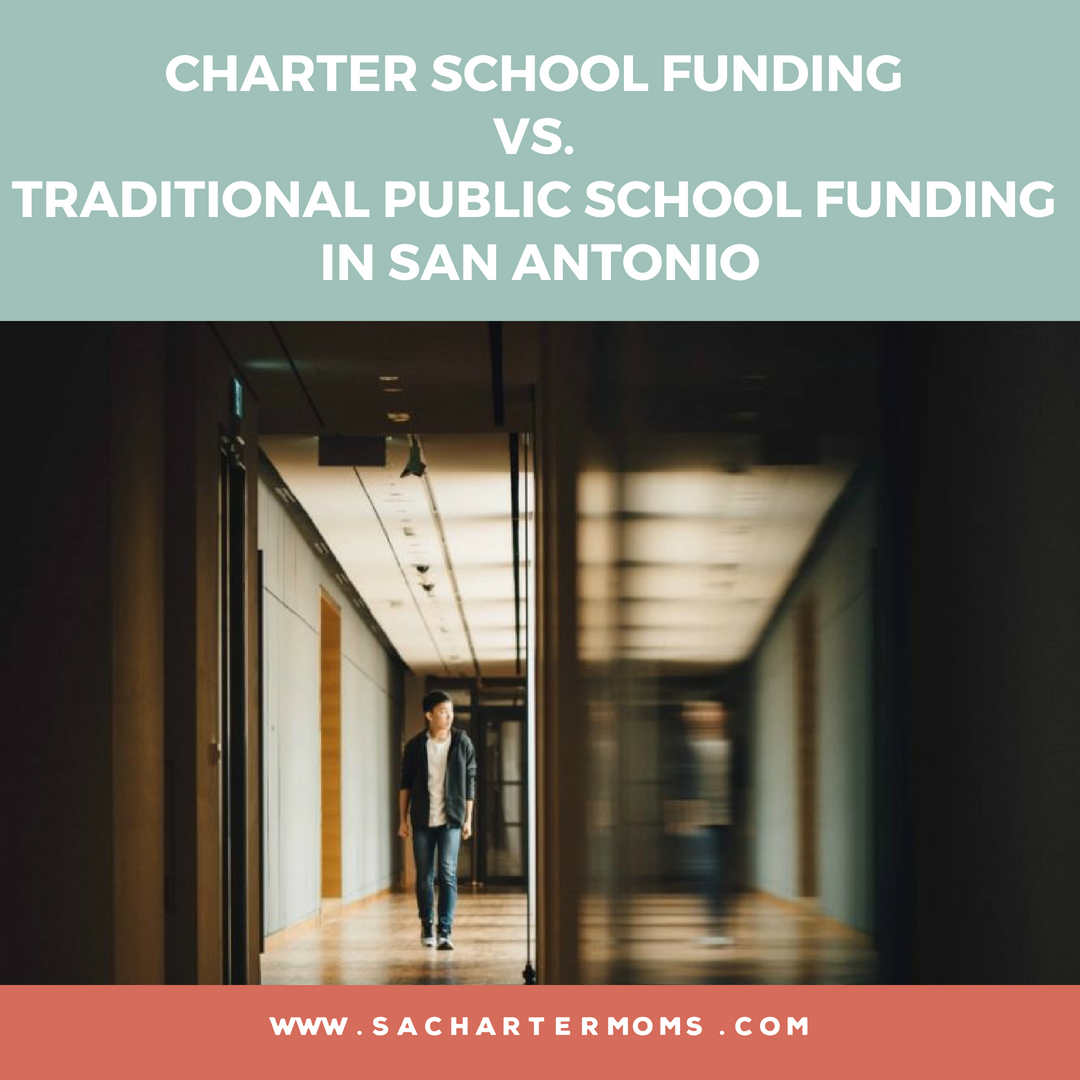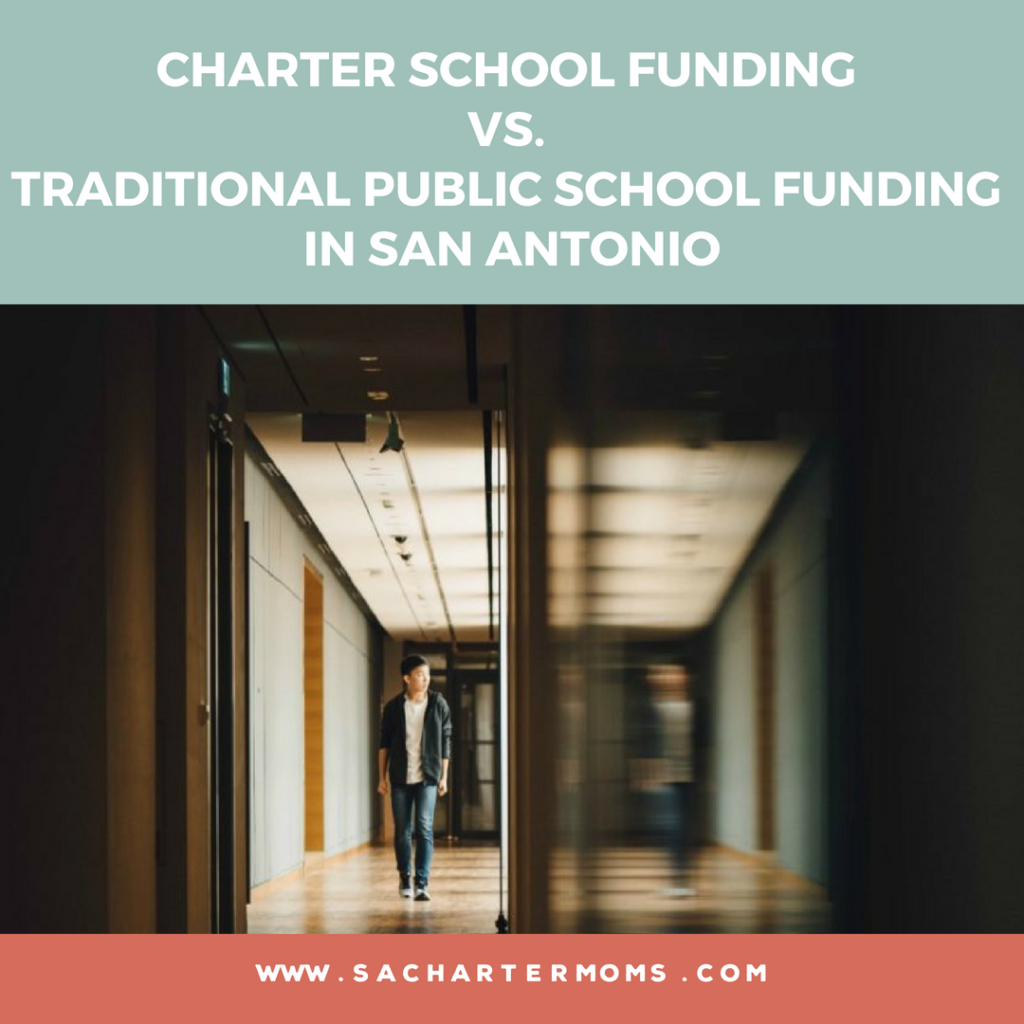
San Antonio charter schools get bigger bang for fewer bucks, according to a new report by researchers in the Department of Education Reform at the University of Arkansas. In San Antonio and seven other major cities, public charter schools used education funds more cost-effectively to raise math and reading test scores for students, and money spent on the charter school sector had a higher return on investment than money spent on traditional public schools.
San Antonio Charter Schools Are More Cost Effective
The study examined the cost effectiveness of money spent on public charter schools versus traditional public schools. For every thousand dollars spent on education, how much improvement was there on math and reading achievement scores on the 8th grade NAEP? The researchers gathered data from a set of eight major cities—Atlanta, Boston, Denver, Houston, Indianapolis, New York City, San Antonio, and the District of Columbia—and compared the efficiency numbers for public charter schools and traditional public schools.
In all of the cities studied, public charter schools outperformed traditional public schools in cost-effectiveness for both reading and math scores. The charter school sectors across the cities were 32 percent more cost effective for reading and 33 percent more cost effective for math. When calculated as a weighted average, giving more weight to the larger cities with more students, the charter school cost-effectiveness advantages increased to 35 percent for reading and 36 percent for math. (pp. 14-15)
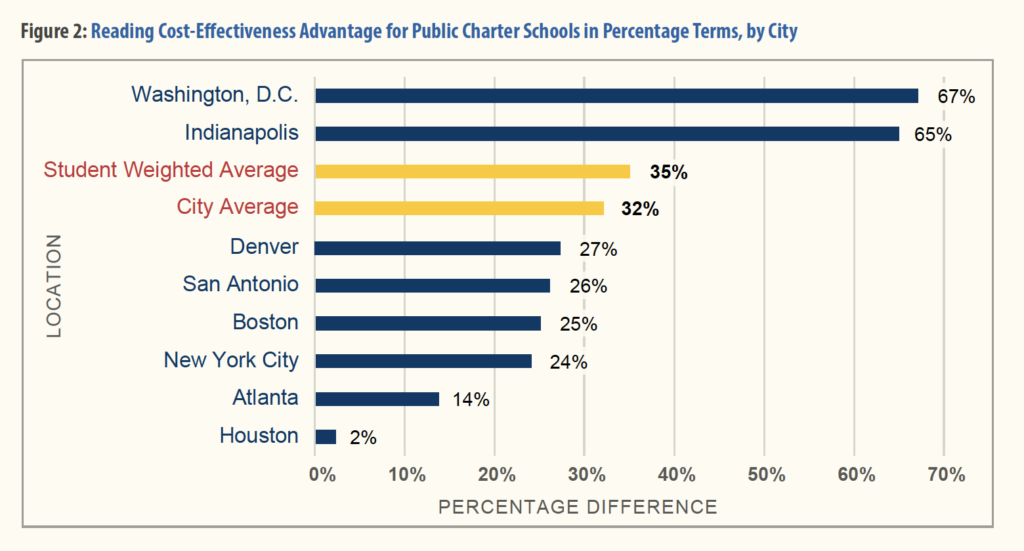
In San Antonio, the charter school sector is 26 percent more cost effective in reading and 25 percent more cost effective in math, as compared to traditional public schools in San Antonio. (pp. 14-15)
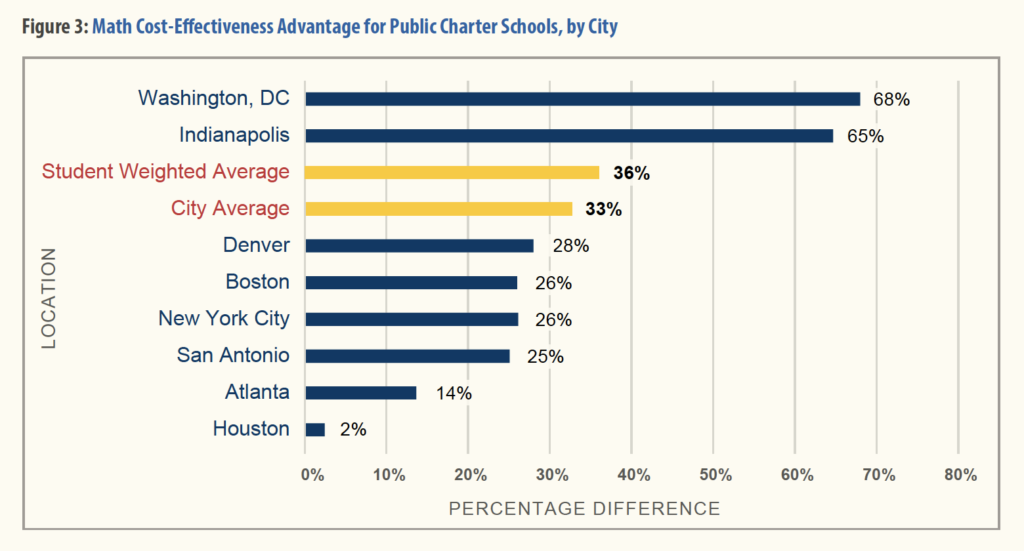
What did the report find notable about cost effectiveness in San Antonio? The Texas cities, Houston and San Antonio, both had relatively low per-student spending. “San Antonio . . . funds its public school students at a little over $11,000 [per year] and its students score about equal to the Texas state average in reading on the NAEP, a rare achievement for a U.S. city.” (p. 9)
In the cost-effectiveness portion of the study, are the charter school students comparable to the students in traditional public schools? In San Antonio, the traditional public schools “enrolled a higher rate of low-income students than their charter sectors” but it was not a large difference. (p. 10) Also, the traditional public schools “more consistently enrolled higher percentages of students labeled as English learners or in special education, but those enrollment gaps failed to explain much of the revenue differences between the public school sectors in Denver, Indianapolis, New York City, San Antonio, or Washington.” (pp. 10-11) The authors concluded that “different levels of student disadvantage across the public school sectors in our cities explain some but not all of the productivity advantage for public charter schools.” (p. 11)
San Antonio Charter Schools Have a Higher Return on Investment
In addition to studying cost effectiveness, the report also analyzed the return on investment of money spent on education in the public charter school and traditional public school sectors. To evaluate learning gains, the authors relied on data from CREDO that carefully matched charter school and traditional public school students to take into account differences in previous test scores and status (e.g., low-income, English-language learner, and special education). (p. 16) These learning gains translate into higher incomes over students’ lifetimes.
The report analyzed return on investment for public education spending and found that public charter schools in these eight cities are outperforming the traditional public schools despite consistently receiving less funding per student. The advantage for charter schools across all the cities is 38 percent; the student-weighted average is 53 percent. (p. 20) In San Antonio, the charter school advantage is 30 percent. (p. 20)
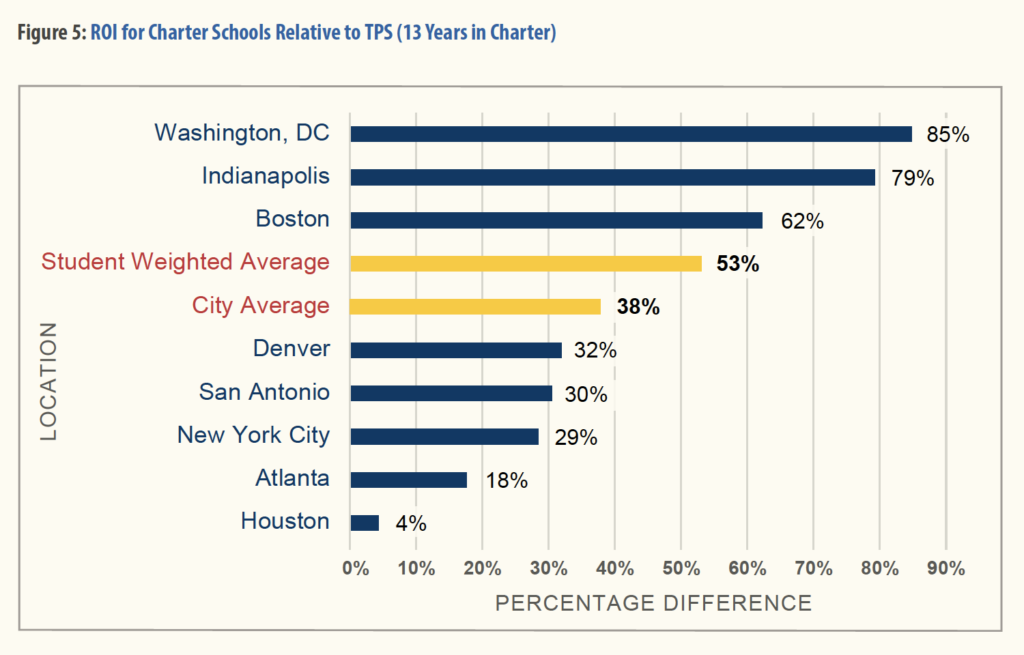
San Antonio Charter Schools Get Bigger Bang for Fewer Bucks
This new report from the Department of Education Reform at the University of Arkansas shows that, across eight major cities (including San Antonio), money spent on public charter schools is more cost effective in raising achievement scores and provides a greater return on investment for students’ lifetime earnings, when compared to money spent on traditional public schools. When funding for public education is limited, it makes sense to put the money where it will do the most good for students. Charter school parents and supporters should communicate this information to our elected representatives.
Read more:
- “U.S. Charter Schools Produce a Bigger Bang with Fewer Bucks,” Corey A. DeAngelis, Cato Institute, February 15, 2018
- “Bigger Bang, Fewer Bucks? The Productivity of Public Charter Schools in Eight U.S. Cities,” Corey A. DeAngelis, Patrick J. Wolf, Larry D. Maloney, and Jay F. May, Department of Education Reform at the University of Arkansas, February 2018
- “Charter School Funding: Inequity in the City,” Patrick J. Wolf, Larry D. Maloney, Jay F. May, Corey A. DeAngelis, Department of Education Reform at the University of Arkansas, May 2017
